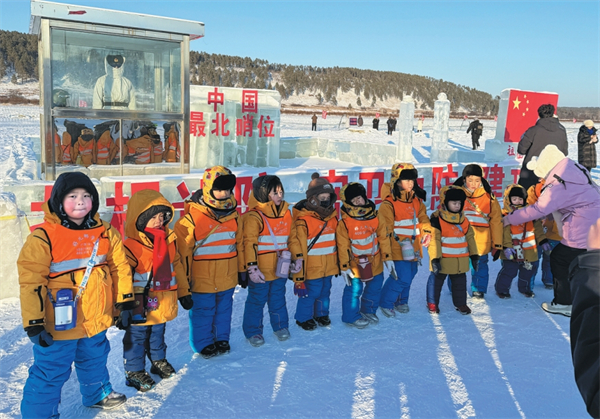Home>Harbin Today
Short-term plan to seal long-term future growth
Updated : 2016-07-08
By Song Mengxing and Tian Xuefei ( China Daily )
A silk map marking the Harbin New Area, the establishment of which was approved by the State Council in December 2015, has recently attracted the attention of local residents.
The map shows the locations of government agencies and other organizations in the area. The Harbin Cartographic Publishing House also launched a mobile version of the map on its official WeChat account to facilitate its use by local people.
The area in Harbin, capital of Northeast China's Heilongjiang province, is a national-level one focusing on cooperation with Russia. The region has a long history of bilateral cooperation and huge potential for development.

The Harbin New Area under construction. Provided to China Daily
The zone consists of areas in Songbei, Hulan and Pingfang districts, with a planned area of 493 square kilometers.
The zone's aim is to make its advanced manufacturing and modern services much more competitive by the end of 2020. By that time, it plans to have a higher level of cooperation with Russia in trade, science and technology.
By 2030, it also plans to have a better management system and an ideal environment for innovative development. The industrial structure and urbanization in the zone will be further improved by that time, local officials said.
To improve the area's design, the Harbin government invited high-level planning and design teams to help formulate an overall development plan.
Government officials said they want to take the opportunity of building the zone and integrating the region into the Belt and Road Initiative, proposed by President Xi Jinping in 2013, to promote Harbin's and Heilongjiang's opening-up.
They said the city would build the zone into an economic engine in China's northeastern region, a demonstration area for the transformation of old industrial centers, and into an area featuring international cultural tourism.
The area plans to help support and promote the development of Heilongjiang and improve the prosperity of old industrial centers in Northeast China.
According to Heilongjiang Daily, the zone would foster three industrial clusters, including advanced equipment manufacturing and new information technology, and boost three emerging sectors - biological medicine, new materials, and tourism and culture.
The Harbin Wanda City, a cultural tourism project developed by Wanda Group, is under construction in Songbei district, a key support region of the new area.
The project, which is planned to cover 1.49 sq km, is expected to receive 20 million visitors annually and directly create 30,000 jobs.

Harbin ramps up childcare services
A new comprehensive service center for childcare in Harbin is expected to be finished by the end of the year.
-
Talent policies drive enterprise development in Harbin
Harbin's "30 New Talent Policies" represents an iterative upgrade to the talent policy system, helping attract and retain talent to bolster economic and social development.
-
Official website of 2025 Asian Winter Games goes live
Harbin, the host city of the 9th Asian Winter Games, has announced that the official website for the 2025 event has recently gone live.
-
Harbin launches measures to facilitate more foreign trade
In the first three quarters of 2023, the total import and export value of Heilongjiang province's goods trade hit 218.22 billion yuan.





